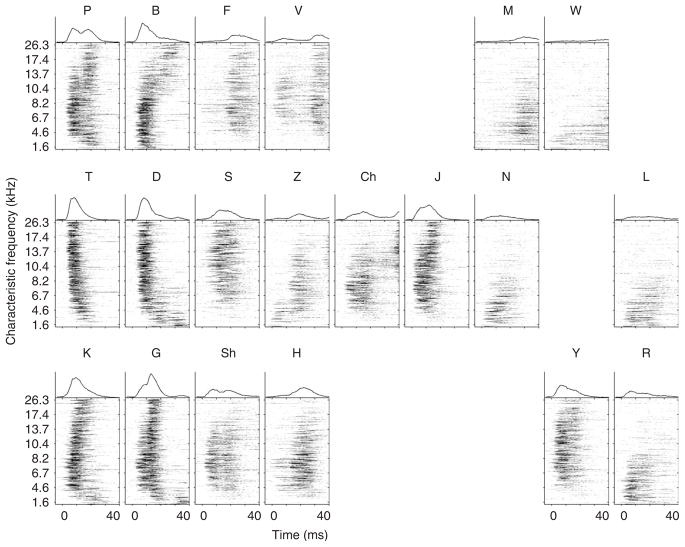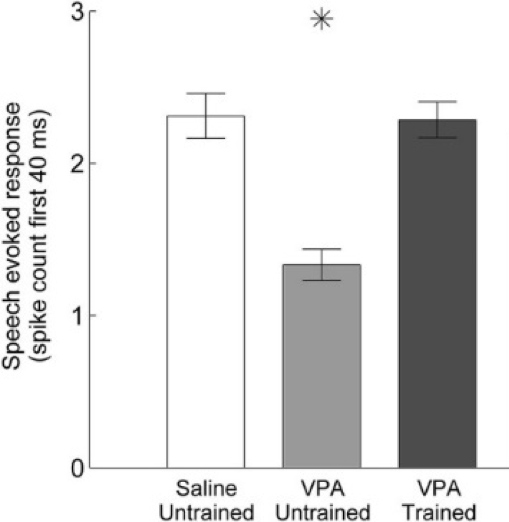The auditory cortex processing of speech sounds.
We previously found that rat auditory cortex processes consonant and vowel sounds distinctly. While precise neural spike timing information is required to accurately identify consonants, only the average neural spike rate is required to accurately identify vowels. Neural activity from 4 cortical auditory fields and 1 subcortical auditory field can be used to accurately predict behavioral speech discrimination ability. These studies documented that the mammalian auditory system is highly effective at discriminating between the basic elements of human speech, and paved the way for numerous studies using rats as a model of speech processing.
Speech processing in the valproic acid (VPA) animal model of autism.
In utero valproic acid exposure is a well-documented cause of autism in humans. Rats that are prenatally exposed to VPA exhibit degraded auditory cortex responses to sounds as well as deficits in speech discrimination. Extensive speech sound training improves both discrimination ability and normalizes neural responses. This finding mirrors the improved behavior and normalized neural responses observed following extensive intervention in individuals with autism. Our team next plans to use the rat VPA model to test the effectiveness of potential adjunctive interventions that can increase the benefit of rehabilitation therapies.
Speech processing in genetic models of autism spectrum disorders.
Extensive speech training strengthens the auditory cortex response to speech sounds in VPA exposed rats. Figure modified from Engineer et al., Frontiers in Systems Neuroscience, 2014.
More recently, our team has explored speech processing in the Fmr1 knockout rat model of fragile X syndrome, the Mecp2 knockout rat model of Rett syndrome, and the Shank3 knockout rat model of Phelan-McDermid syndrome. Each of the models exhibits alteration in auditory cortex processing of sounds. Fmr1 rats had weak and slow auditory cortex responses that were unable to normalize following extensive speech training. Mecp2 rats had hyperexcitable neural responses and were impaired at speech discrimination. Extensive training improved auditory cortex responses, although neural plasticity in these animals was abnormal. Shank3 rats also exhibited weaker and slower neural responses. These findings represent a key first step in understanding the interaction between the genetic mutations that cause autism and the therapies used to treat it. Our future work on this subject may clarify why some individuals with autism improve greatly following intensive behavioral therapy and others benefit little.
Reversing speech processing impairments.
Using either speech discrimination training or vagus nerve stimulation (VNS) paired with sounds, we have documented auditory cortex plasticity following therapy. Long-term speech training changes responses to sound in multiple auditory cortex fields and reorganizes auditory cortex to better respond to the acoustic characteristics of the trained sounds. Pairing VNS with speech sounds alters auditory cortex responses to a greater degree and alters responses significantly faster than speech training. Current work on these projects is focused on finding the optimal parameters to generate auditory cortex plasticity. It is likely that some therapies will better benefit certain subpopulations of individuals with autism spectrum disorders.


